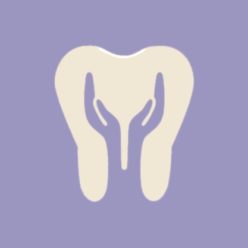The world we live in is stressful and it is having an adverse affect on our medical and dental health! Stress is linked to inflammation and inflammation is linked to many of the ailments we deal with.
In dentistry, stress can affect many aspects of oral health. Dental and medical studies have clinical evidence of the association of periodontal disease with heart disease, diabetes and other medical issues. Headaches are also linked to dental issues such as clenching, grinding or abscessed teeth.
Many people find themselves with cracked teeth and sore facial muscles due to clenching; and often are not aware of this habit. Their dentist is often the first to point out evidence of fractured and worn teeth.
When we chew our food, our teeth rarely contact with enough force to damage our strong enamel. Enamel wear and fracture is directly related to tooth to tooth contact. Enamel wear can also be caused by acid reflux, bulimia or habits such as sucking on lemons.
While we sleep our central nervous system monitors our heart and respiration. We are unaware of the extreme force we can place on our teeth if we clench or grind. The amount of pressure our facial muscles exert can be 3-4 times more than what we would tolerate if awake.
Over a long period of time, clenching and grinding can damage teeth by causing fractures, nerve damage and severe wear. Often times, root canal therapy maybe required. In order to restore severely worn dentition, comprehensive treatment may include crowns, veneers, implants and orthodontics.
The muscle soreness or headaches related to clenching or grinding (bruxism) is very different from the pain related to TMJ or migraines. Migraine headaches are vascular. TMJ pain is directly related to the jaw joint which is very complex. It is important to discern what types of headaches or facial pain a patient is having so that a proper treatment sequence can be followed. Facial pain due to nocturnal muscle activity can be successfully treated by a fitted and adjusted occlusal guard, which can be worn while sleeping and if necessary during the day. Adjustment and follow-up appointments are essential in helping achieve the best results.
Most occlusal guards are stream-lined, so that if daytime use is necessary, the guard can be worn comfortably. It is essential that subsequent appointments are maintained. If muscles are tight they go through physical changes while in occlusal therapy. These changes affect the fit of the guard. The follow-up adjustments follow these muscular changes. Patients often ask how long they must wear their guard. The reality is indefinitely.
At the office of Dr. Peter Lecca, we specialize in preventing and treating these types of dental injuries. In our office we have a certified lab technician that works side by side with us to deliver precise comfortable restorations. We also work with a team of local specialists to ensure quality results.
